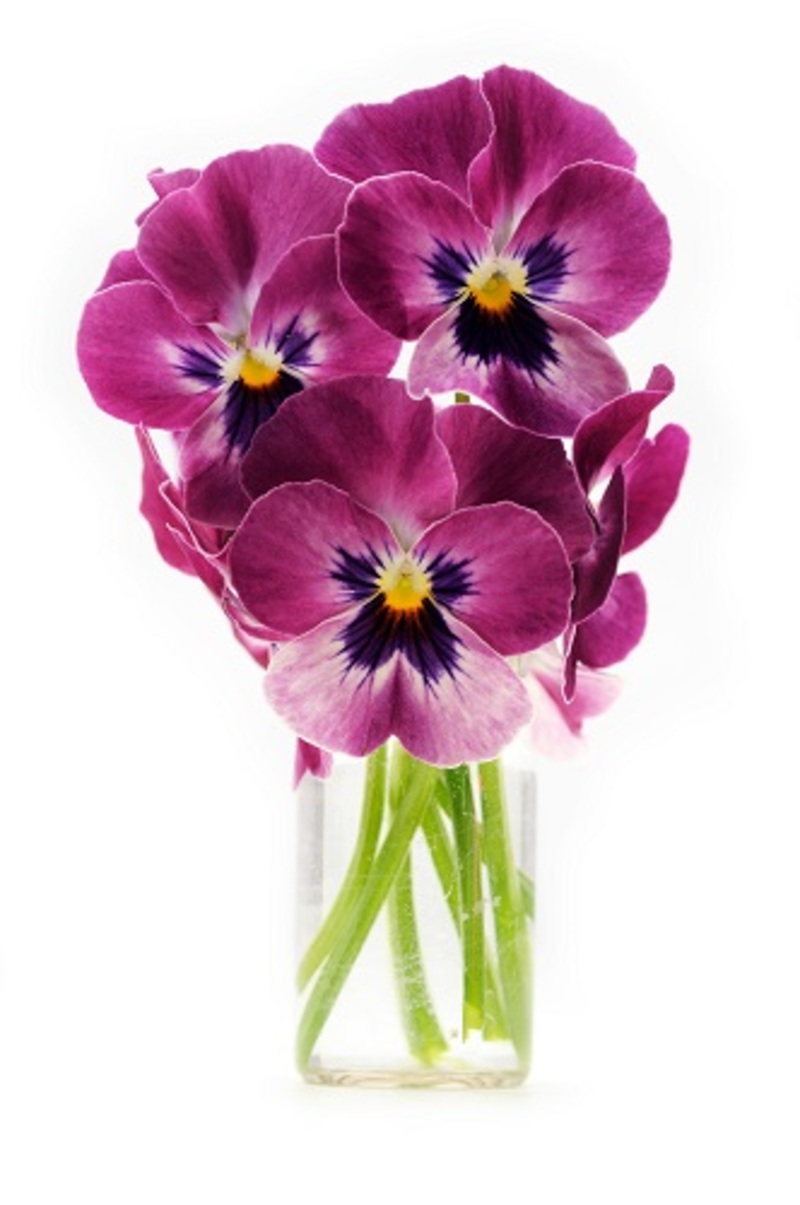Essential Care Tips to Extend Your Poinsettia's Bloom
Poinsettias are iconic houseplants that shine most brightly during the holiday season, bringing vibrant color to homes worldwide. But if you're thinking these festive beauties are strictly for December displays, think again! With proper poinsettia care, you can extend your plant's bloom well beyond the holidays, keeping their lush color and beauty for months to come.
In this comprehensive guide, you'll discover the best poinsettia care tips, debunk some common myths, and learn how to keep your beloved poinsettias thriving far past the New Year. Whether you're a seasoned plant parent or new to indoor gardening, this article will equip you with everything you need to know to extend your poinsettia's bloom.
Understanding the Poinsettia: More Than a Holiday Decoration
Before we delve into care techniques, it's important to understand what makes poinsettias unique. Native to Mexico and Central America, Euphorbia pulcherrima--commonly known as poinsettia--is famed for its colorful bracts (modified leaves), which are often mistaken for flower petals. The actual flowers are the tiny yellow structures in the center, called cyathia.
Many people throw out poinsettias after the New Year, thinking they've reached their peak, but with proper poinsettia care, these stunning plants can maintain their vibrant display for several months and be rebloomed the following season.

Choosing a Healthy Poinsettia: The Foundation for Longer Bloom
The longevity of your poinsettia starts before you even bring it home. Here's what to look for when shopping for the perfect plant:
- Vibrant, Deeply Colored Bracts: Select plants where the colored bracts (red, pink, white, or variegated) look healthy and are free from brown spots, wilting, or damage.
- Intact Cyathia: The small, yellow flower buds in the center should be present and not yet shedding pollen, as this indicates the plant is "fresher" and will last longer.
- Full Foliage: Leaves should be dark green and abundant all the way to the soil surface.
- No Drooping or Dropped Leaves: These are signs of stress, improper watering, or exposure to cold drafts.
Optimal Location: Finding the Right Spot for Your Poinsettia
Where you place your poinsettia greatly impacts its longevity. Here are essential holiday plant care tips for the perfect location:
- Bright, Indirect Sunlight: Poinsettias thrive in ambient conditions, preferring a spot near a sunny window but shielded from direct light that can scorch the leaves.
- Avoid Cold Drafts: These tropical plants dislike sudden temperature changes, so keep them away from exterior doors, unsealed windows, and heat vents.
- Ideal Temperature: The sweet spot is between 65?F and 70?F (18?C-21?C) during the day, with nighttime temperatures not dropping below 60?F (15?C).
- Humidity: Poinsettias prefer moderate humidity; if your home is dry in winter, place a tray of water near your plant or use a humidifier.
Avoiding Common Placement Mistakes
Never place your poinsettia on a cold windowsill or near radiators. Both extremes--too cold or too hot--can cause leaves to drop prematurely, shortening your plant's flowering time.
Watering Wisely: How to Water Poinsettias for Maximum Bloom Longevity
One of the biggest culprits of premature poinsettia decline is improper watering. Here's how you can extend your poinsettia's bloom through smart watering:
- Keep Soil Moist, Not Soggy: Water when the top inch of soil feels dry, but don't let the plant sit in water. Overwatering leads to root rot, causing leaves to yellow and drop.
- Empty Saucers: Always empty drainage trays after watering to prevent water from accumulating at the roots.
- Use Room-Temperature Water: Cold water can shock the roots. Let tap water stand until it warms up to room temperature before watering your plant.
- Check Pots with Foil Wraps: Many store-bought poinsettias come wrapped in decorative foil, which traps excess moisture. Cut holes in the bottom or remove the wrap entirely for better drainage.
Feeding Your Poinsettia: The Right Fertilizer for Extended Joy
While fertilizing isn't crucial while the plant blooms, you'll help it stay healthy for the long term by feeding it once the bracts begin to fade.
- No Fertilizer During Peak Bloom: Hold off on fertilizing while bracts are colorful. Mistimed feeding can stress the plant and alter its blooming cycle.
- Start Fertilizing in Spring: Use a balanced, water-soluble houseplant fertilizer (such as 20-20-20) once every two weeks, but only after new growth appears post-bloom.
- Don't Over-Fertilize: Excess fertilizer can build up and burn the roots. Follow package directions carefully for best results.
Humidity and Air Quality: The Unsung Heroes of Poinsettia Longevity
Indoor air tends to be dry in winter, which isn't ideal for poinsettia care. Increase humidity for a happier, longer-blooming plant:
- Mist Regularly: Lightly mist poinsettia leaves or set a shallow tray filled with water and pebbles near the plant.
- Avoid Drafts: Keep away from areas with sudden temperature fluctuations or airflow changes.
Air Quality Tips
Good air circulation is important, but avoid placing your poinsettia in a direct breeze. Stagnant, smoky rooms or rooms with gas appliances are also best avoided.
Pruning, Pinching, and Re-Blooming: Keeping Your Poinsettia for Years
If you want to turn your holiday poinsettia into a long-lasting houseplant that reblooms year after year, a little extra care goes a long way. Here's how:
- Post-Holiday Pruning: Once the bracts fade and the plant becomes leggy (usually by March or April), cut stems back to about 4-6 inches above the soil. This encourages fresh, bushy growth.
- Pinching: During the growing season (late spring and early summer), pinch off the tips of new shoots. Regular pinching every month helps create a fuller, more attractive plant for next season.
- Transplanting: If roots fill the pot or the plant looks crowded, repot in spring into a slightly larger container using fresh, lightweight houseplant soil.
How to Make Your Poinsettia Rebloom
Getting your poinsettia to rebloom after the holidays involves mimicking its natural environment:
- From September Onward: Provide 14 hours of complete darkness each night for 8-10 weeks (cover with a box or place in a dark closet from evening to morning); this encourages the bracts to color up again.
- Daytime Light: Continue to provide bright, indirect light during the day.
- Fertilize Monthly: Use a balanced houseplant fertilizer to support new bract and bud formation.
Poinsettia Myths Debunked: What You Need to Know
- Poinsettias Are Not Poisonous: Contrary to popular belief, poinsettias are not highly toxic to pets or humans. While eating large quantities can cause mild discomfort, they are generally safe.
- Color Change is Natural: Green leaves turning red, pink, or white is a natural part of the blooming process, not a sign of distress.
- Poinsettias Aren't Disposable: With the right care, these plants can thrive for years, not just for the holidays!
Troubleshooting Common Poinsettia Problems
Leaf Drop
If leaves are dropping rapidly, check for:
- Cold Exposure: Move the plant to a warmer, draft-free area.
- Overwatering or Underwatering: Ensure the soil is moist but never soggy, and that excess water can drain away.
Yellowing or Wilting Leaves
- Poor Lighting: Move your poinsettia to a brighter spot, but out of direct sunlight.
- Water Stress: Check soil moisture and adjust watering accordingly.
Pest and Disease Management
- Watch for Whiteflies: Small white insects may cluster under the leaves. Treat with insecticidal soap or a gentle rinse.
- Fungal Issues: Avoid getting the leaves wet and ensure good air circulation to deter mold or leaf spot fungus.
Frequently Asked Questions About Poinsettia Care
1. How long can poinsettias bloom indoors?
With ideal care--including proper watering, light, and temperature--your poinsettia can bloom beautifully for two to three months after the holidays.
2. Can I plant my poinsettia outdoors after the holidays?
If you live in USDA hardiness zones 9-11, you can transfer your poinsettia outside. Once nighttime temperatures remain above 60?F (15?C), plant in a sheltered spot with partial sun.
3. What causes premature leaf or bract drop?
Sudden temperature swings, drafts, overwatering, or poor lighting are the most common causes. Address these factors for longer blooms.
4. Are poinsettias safe around pets and children?
Yes! While it's best to keep curious pets and children from chewing on the leaves (which can cause mild tummy upset), modern studies show that poinsettias are not highly poisonous.

Summary: Keeping Your Poinsettia Blooming Longer
- Choose a healthy, robust plant at purchase
- Keep in a bright spot with indirect sunlight
- Water only when the topsoil is dry
- Fertilize after bract color fades and new growth begins
- Keep away from drafts, heat vents, and extreme temperature changes
- Increase humidity and ensure good air circulation
- Prune, pinch, and follow a dark treatment regimen for reblooming next year
Conclusion: Enjoy Your Poinsettia's Bloom for Months
Poinsettias don't have to be short-lived holiday decorations. With these essential care tips, you'll be able to not only extend your poinsettia's bloom but also revive and enjoy the same plant year after year. Combine proper lighting, meticulous watering, the right temperature and humidity, and you'll turn your living room into a full-season showcase of vibrant color and lush foliage.
Start applying these poinsettia care tips today and watch your festive favorite reward you with a long, beautiful display--well into spring and beyond!

